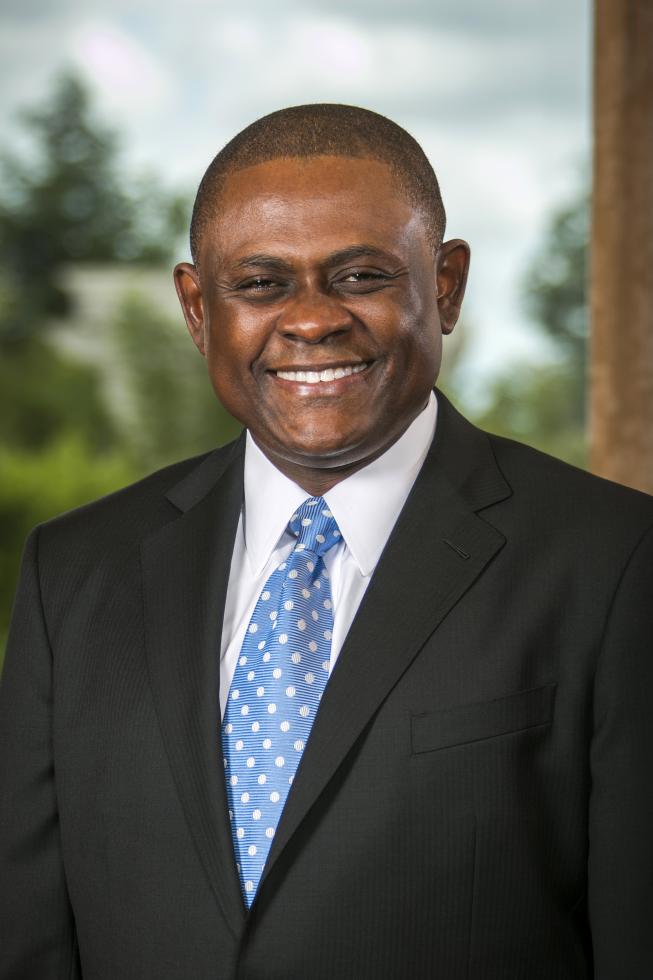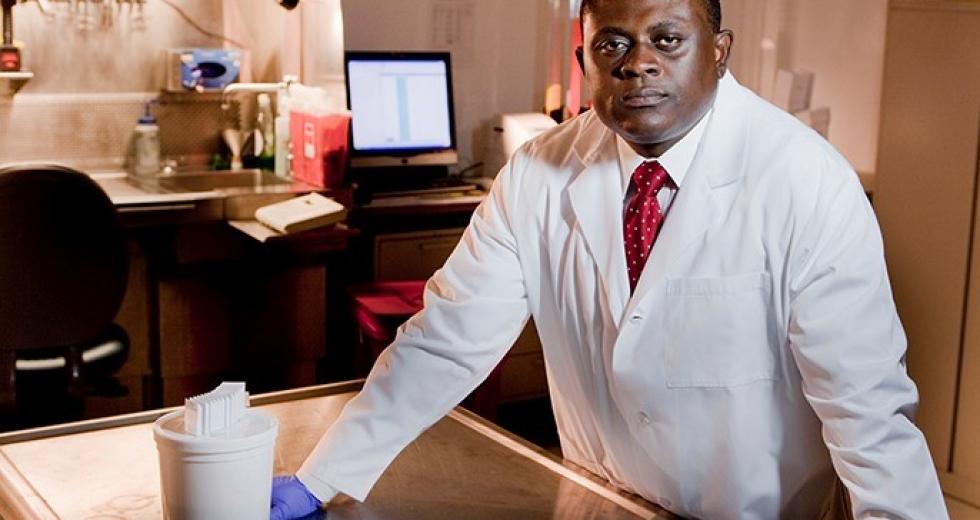Bennet Omalu is a forensic pathologist who lives comfortably in Sacramento with his wife and two young kids. Chief medical examiner of San Joaquin County and a clinical professor at the UC Davis School of Medicine, his life today contrasts sharply with being a malnourished infant during Nigeria’s Civil War.
That adversity did not stop him. Omalu entered medical school at age 16, graduated and immigrated to the U.S. Here, he also survived and thrived against steep odds, as depicted in the 2015 film “Concussion,” starring Will Smith.
A big part of Omalu’s story lies in forensics, cadavers, labs and microscopes. He shares all that and more in his memoir, Truth Doesn’t Have a Side: My Alarming Discovery about the Danger of Contact Sports. Published this past August, the book came out near the start of the National Football League’s new season. And the NFL has long been central to Omalu’s work.
“On every play, the heads of football players are hit and slapped,” Omalu says. “When you listen to football experts, they talk about trying to make football safer. That is a little like saying you can make fire safer. How can you make fire safer? We need to recognize the truth for what it is.”
In 2002, when Dr. Omalu was working in Pennsylvania at the Allegheny County Medical Examiner’s Office, he performed an autopsy on “Iron” Mike Webster, former center for the Pittsburgh Steelers who died at age 50. Omalu, like Webster, battled depression. However, Webster had endured a total health decline that flummoxed family and friends. They saw a man whose NFL career was synonymous with the words “rock solid” fade into a shadow of his former self.
Omalu refers to Webster as a man who did not deserve the scorn he got in a post-football crash. The doctor’s insight into what caused Webster’s decline set the record straight. In brief, Omalu found in Webster’s autopsy a trauma to tau protein, which supports and transports nutrients to and from brain cells and fiber.
Repeated head strikes from football opponents had fractured the skeleton of Webster’s brain cells and fiber, Omalu surmised, during a months-long investigation. In it, he uncovered an incurable brain condition, chronic traumatic encephalopathy or CTE, in Webster. Later, Omalu published a peer-reviewed paper on Webster’s case in Neurosurgery, the first of many research papers on the topic.
Dr. Bennet Omalu (photo courtesy UC Davis)

Omalu’s memoir details in part how and why the NFL fought his findings on CTE’s causes and effects. The NFL accused Omalu of falsifying his research, according to the book. He drew on his internal strength to weather the storm, and credits his perseverance to get the truth out to a broad audience to his mom, dad and religion. “They taught me to do what’s right and to be myself,” he says. “That and my faith as a Christian kept me strong.”
That helped Omalu — at first unaware of football’s cultural popularity in the U.S. — stand firm against the NFL’s attempts to crush his research. “I grew up in a protected environment,” he says. Omalu was unaware of American slavery or Jim Crow bigotry, thus unaware of why others might have treated him poorly, from shopkeepers to the police. To Omalu, he was not an African American, nor were others of a difference race. He says he saw all people as God’s children.
In 2005, not long after Webster’s demise, his Steelers teammate Terry Long died by suicide. In an autopsy, Omalu found CTE in Long’s brain.
The NFL maintained there was no link between professional football and CTE in players. Omalu compares the NFL’s denial to that of Big Tobacco, which for decades denied the adverse health impacts of smoking. A major report in the Journal of American Medical Association, released this past July, draws the same conclusions as Omalu.
“In a convenience sample of 202 deceased players of American football from a brain donation program, CTE was neuropathologically diagnosed in 177 players across all levels of play (87 percent), including 110 of 111 former National Football League players (99 percent),” according to the report. CTE was present in younger football players, too: “3 of 14 high school (21 percent), [and] 48 of 53 college (91 percent)” athletes.
Grant Feasel, of Barstow, who died of CTE and alcoholism at the age of 52 after a 10-year NFL career, was one of the deceased former football players in this study, according to his widow, Cyndy, author of After the Cheering Stops. “Dr. Omalu is a CTE pioneer,” she says. “He is the man that stood up to the NFL. He says [the] truth about sports that cause brain damage.”
Why deny that football can cause CTE? Follow the money. The NFL made over $13 billion in revenue last year, compared with Major League Baseball, which earned $9.5 billion, MarketWatch reports. High school sports have also become profitable, albeit on a smaller scale. Omalu advises youth under age 18 to avoid high-impact, high-contact sports such as football. But that’s a tough sell. For instance, Spectrum (formerly Time Warner Cable) owns the broadcast rights for both boys and girls sports in 13 regional and state championship events in California, and is set to broadcast over 1,500 games during a 15-year contract (through 2026), earning the California Interscholastic Federation a gross income of $9.7 million.
As a clinician, Omalu has pursued the “ask the workers” method of Dr. Bernardino Ramazzini, the founder of modern occupational medicine. He advises doctors to ask patients: “What is your occupation?” While athletes — youth through professionals — do not share equally as wage earners, they are working in games and practices. By learning about the work of a patient, a doctor can likely better treat him or her, according to Omalu.
Currently, Omalu is on a mission to protect the brains of youth from irreversible injuries through education and prevention about high-impact sports. “The truth is inconvenient, but at the end of the day it will prevail and empower everybody,” he says.




Comments
Thank you for doing the research for your in-depth article and for sharing your valuable insights. And for keeping the community informed.
Here are three additional resources on the topic which relate to Dr. Omalu and Cyndy Feasel that you might find interesting:
What is it like to live with a former NFL player who has CTE? An interview with Cyndy Feasel, author of After the Cheering Stops https://www.linkedin.com/pulse...
What happens inside the helmet of a ten-year-old football player? https://vimeo.com/230696433
What will we tell our kids (and grandkids) about football as it existed in 2017? https://www.linkedin.com/pulse...
Keep up your GREAT work!
Very nice to see Doc continue his research in brain injury. Having one myself, I watch and listen intently!
Good evening.
Thank you for conducting such an extensive research and shedding so much light, and information on such a much - loved, yet highly controversial topic on the NFL league on football.
Keep the faith against all odds.
Thank you, Thank you.